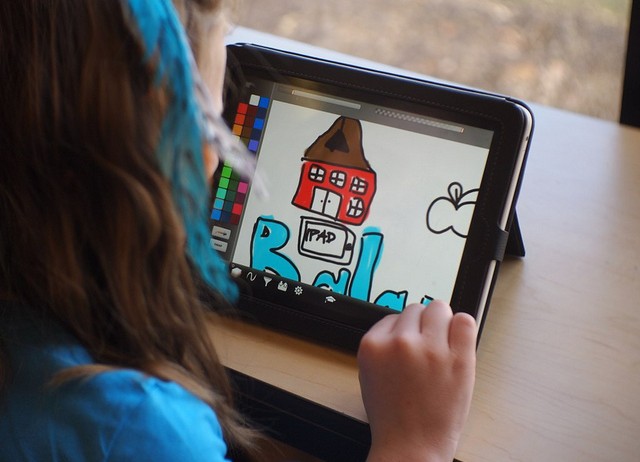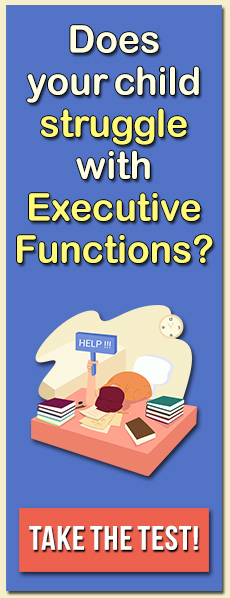I’m a psychologist, not an educator, and I have to admit I sometimes get confused by the constant changes in the educational world. Common Core State Standards? The “new math”? Keeping up with everything is overwhelming. These changes seem dramatic to someone like me, but when push comes to shove, what remains in our educational system is an emphasis on teaching the good old fashioned “3 Rs.” I totally support teaching these basic skills of reading, writing, and arithmetic to all students. I do, however, have some questions about what it actually means to master the “3 Rs” in today’s digital world.
Does competency in reading mean that someone will be able to quickly read and comprehend a 500 page book? Does writing proficiency mean that a student should be able to handwrite a 500 word essay in a timed test setting? Are math skills defined by how quickly one can manually compute the answers to triple digit multiplication problems? And how do these expectations affect children who learn differently? Are we properly utilizing technology to reach alternative learners?
In my work with alternative learners — children who experience difficulties with attention, memory, executive functions, and other academic skills — I often observe that formal assessments of traditional skills such as handwriting, reading fluency, and math calculation skills suggest that these children are not learning at their age levels. In the past, alternative learners received individual education plans (IEPs) or other forms of classroom intervention that reduced these students’ workloads or provided individualized support. But in today’s digital world, I see no reason that many of these students cannot simply use technologies that would allow them to overcome their own learning differences. This approach could not only help them to become more effective learners, it could reduce a tendency to see themselves as learning disabled.
Fortunately, the trend of using technology to reach alternative learners is beginning to emerge in many schools. For years now, students have been allowed to use calculators in high-stakes examination settings such as the SATs. They are now expected to have calculators available to do much of their basic math in the classroom. But the same acceptance of technology is not always observed for the subjects of reading and writing.
Children who exhibit slow or sloppy handwriting should not be subjected to intensive penmanship training in the classroom. Instead, parents should insist that “writing” practice take place on a keyboard or even with dictation apps. The fact is, many of these children appear to be quite fluent in their capacity to text or type quickly or to enter text on a tablet. Allowing “writing” on a preferred device may result in a dramatic change in attitude and performance on writing tasks.
Similarly, many children who struggle with reading can benefit from the use of technologies that allow for alternative forms of “reading.” Again, I want to emphasize that children need to learn the basic skills of reading. That being said, once they have learned to decode words and read with a modest degree of fluency, the reason for reading is to gain knowledge. If comprehension comes easier by listening to an audiobook than by reading visually, why not use these technologies occasionally? Perhaps even better, why not use a tool such as Amazon’s Whispersync, which offers the text of an audiobook and highlights the words as they are read. This multimodal approach to reading can be very powerful for certain alternative learners.
In my conversations with parents and educators, I find that there is some reluctance to fully embrace technology to reach alternative learners in the classroom. I think that we need to reexamine our approach to the 3 Rs. Reading, whether that be via an audiobook or through traditional visual reading of a textbook, increases knowledge and helps us to makes connections. Math is not about recalling formulas or doing fast calculation, but about using numeracy skills to make decisions and to apply them to science and discovery. Writing is not about handwriting, but about the capacity to express ourselves through our words.
As a psychologist, my biggest concern for alternative learners is the discouragement and frustration that they experience when they struggle with simple tasks such as handwriting and reading fluency. When they are forced to spend hours improving their handwriting or have teachers who insist that the only way to “read” is to be staring at a book, they begin to see themselves as being less capable than their peers. We are fortunate to have the tools and technology to reach alternative learners and help them master the 3 Rs. It’s time we start embracing them!
To read more about using technology to teach core academic skills to alternative learners, read about teaching kids who hate to write, why kids with dysgraphia, DCD, and ADHD should learn dictation skills, and writing tools for kids who hate handwriting.





